
The Dollar Wrecking Ball: Why is a strong US dollar so dangerous?
The rising US dollar strength is starting to produce cracks across economies and markets.
On August 11th, Ethereum successfully passed the Merge on a Goerli testnet. Following Ropsten and Sepolia tests, this has been a third triumphant test of the anticipated upgrade. The Merge is considered to be the most significant upgrade in blockchain history. Hence why everyone is so utterly excited. Developers and enthusiasts were watching the test live and celebrating when a panda, indicating a success, appeared on screens.
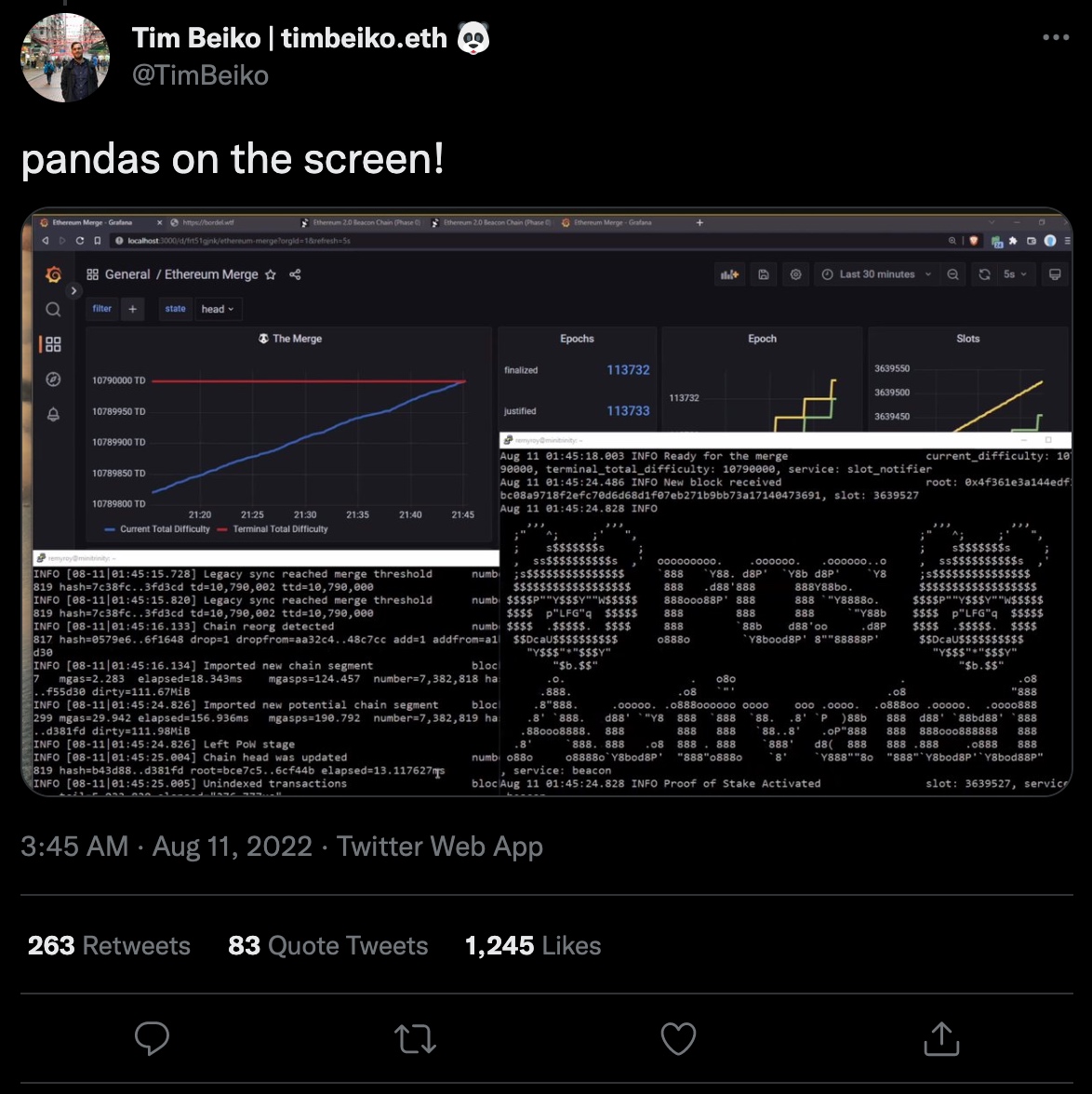
The job of the testnet was to simulate Ethereum’s environment, undergo the software upgrade and see whether there are any bugs in the code or problems in the processes. The success of all three testnets gave the developers a green light to move ahead with the Merge as planned. They even moved up the tentative date of the upgrade to September 15th. So, how can we expect the price of ETH to behave post and pre-merge? There are three ways through which we will assess ETH’s potential future price direction:
1. Positioning in the derivatives market
2. Intrinsic value
3. The economy and broader markets
Derivatives data give a clear indication
Derivatives, namely options and futures, are becoming increasingly crucial within the digital asset space. It is not a surprising development; as the market matures, a wider variety of tools becomes available to express your investment ideas, and derivatives have unique hedging ability, a valuable feature for seasoned investors.
Only a few cryptocurrencies have their futures and options listed on an exchange, and even out of these, most of the volume is done in Bitcoin and Ethereum. The Merge update is seeing a considerable inflow of money into the Ethereum derivative space. Incidentally, at the end of July, Ethereum’s open interest (the number of opened option and future contracts) surpassed that of Bitcoin for the first time ever. Institutions and individual traders are evidently putting bets on ETH price action around the Merge. Let’s look at the derivative data compiled by Glassnode to better understand the current investor’s positioning
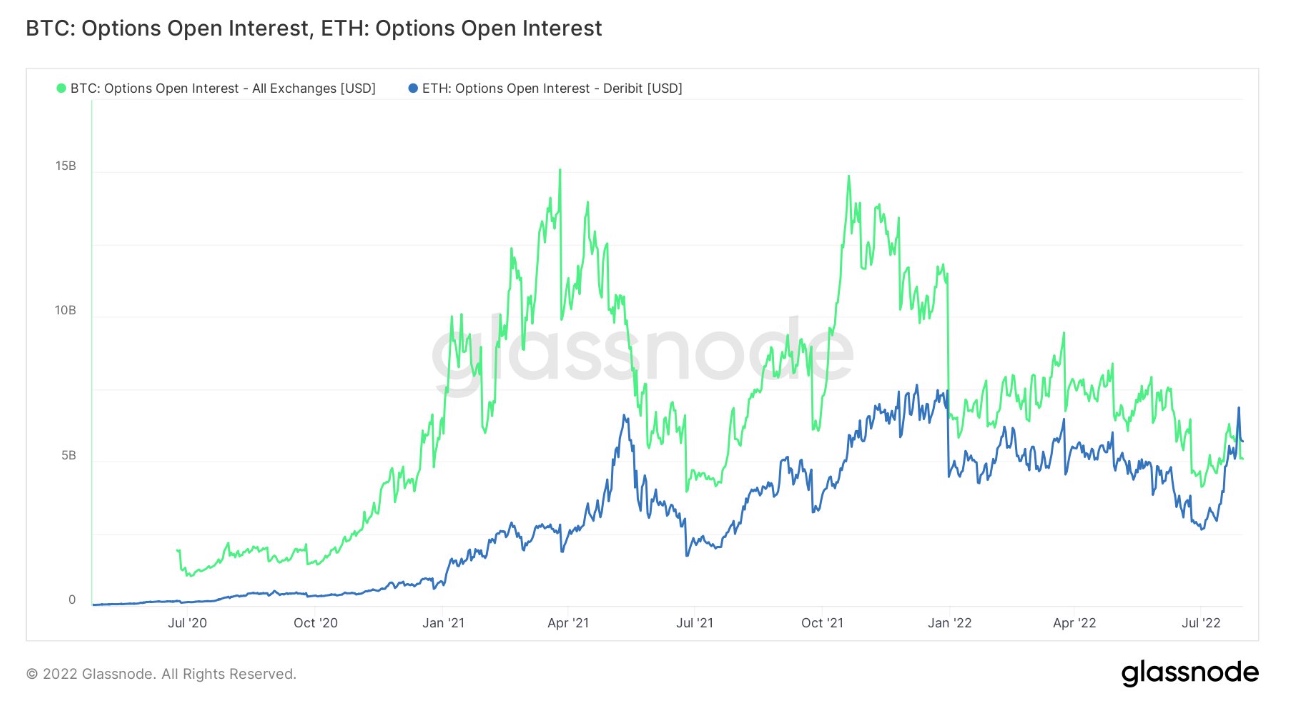
First, we examine the ETH open interest for September. The turquoise bars represent call options, and the purple bars represent put options. Quick crash course on options:
Call options serve to bet on higher prices in the future or hedge against a spike in prices if one is positioned short, and vice versa for put options, which serve to bet on falling prices or hedge against falling prices if one is positioned long.
From September options, we can see that traders are heavily betting on a powerful price spike heading into the Merge. Almost $250 million of open interest is betting on a $4000 and $5000 price target, a 300% increase from the current price. This options structure results in a shape of a volatility smile in the image below:
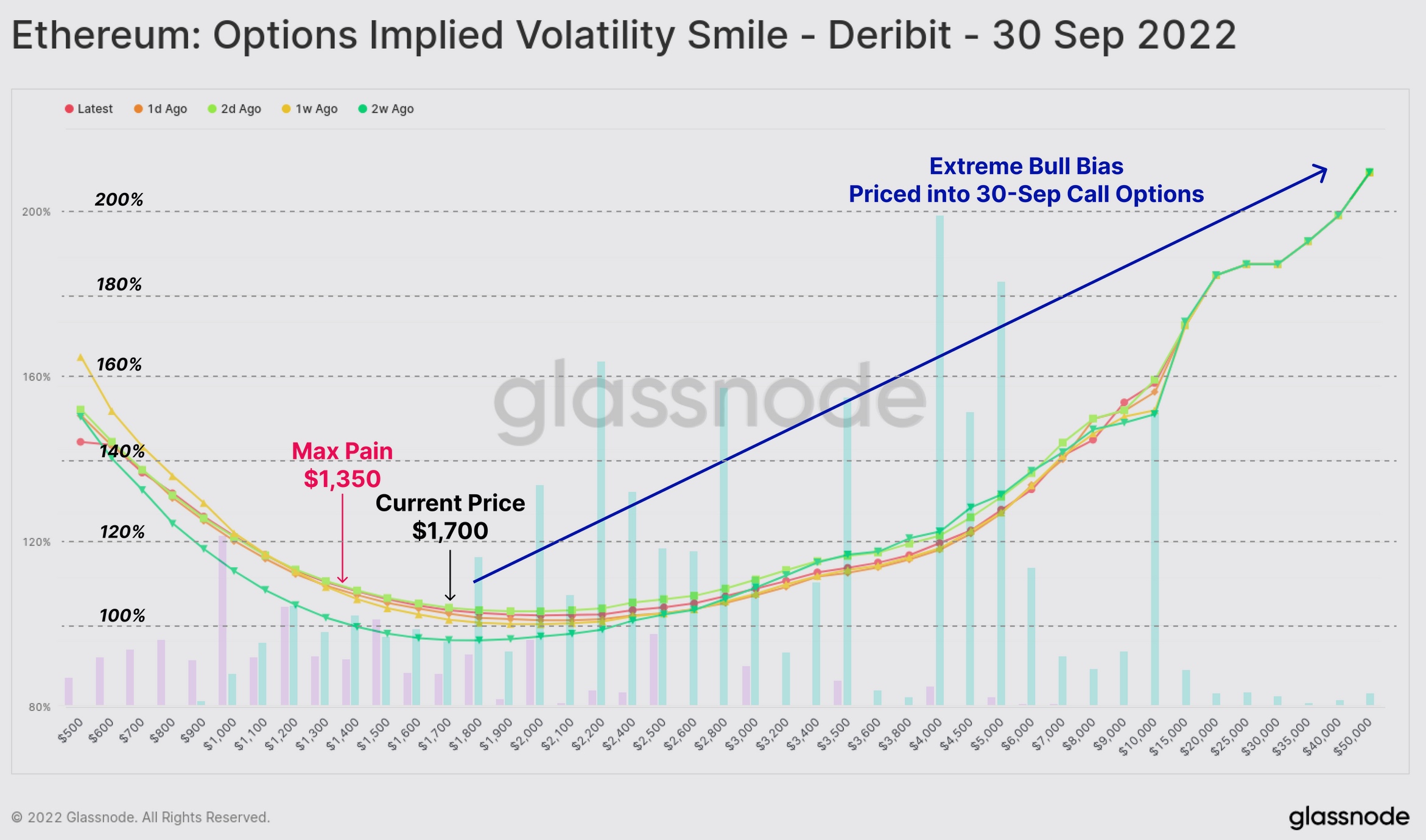
We don’t want to give you a complete course on options; it suffices to say that based on the shape of the volatility smile, we can infer the investors’ bias (bearish or bullish). The volatility smile for the September options has the right tail heavily skewed to the upside. That means investors are betting on much higher prices in September and paying quite a high premium for it.
Now, let’s look at the October volatility smile:
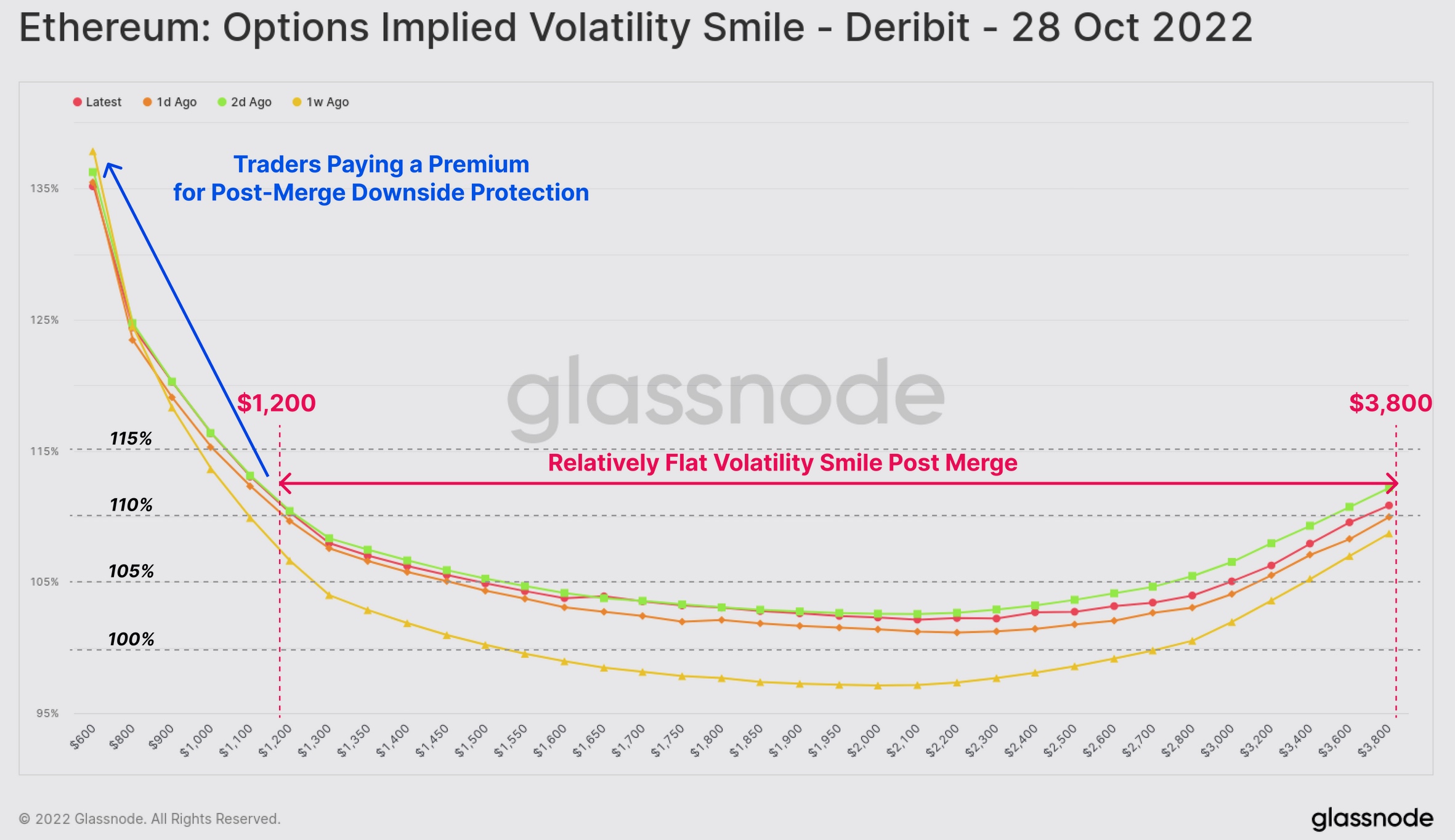
A quick glance is enough to see that this is the exact reverse of the September picture. Investors are evidently betting on a price collapse in October and are willing to pay a very high premium to express that bet/put on that hedge. Hence, the structure of the derivatives gives a very clear picture of how investors are positioning ahead of the Merge.
There is one more way through which traders demonstrate their bias, the futures term structure. Once again, we do not want to get technical; all we really care about is its shape. The more common is a state of contango, where the curve is rising; that means investors expect higher prices in the future. Ethereum futures are currently in backwardation, which is the exact opposite. Investors are selling the futures contracts (they are net short) going into the year-end. So in short, the shape suggests a strong demand for ETH in the near future, which dissipates and turns into selling by the year-end.
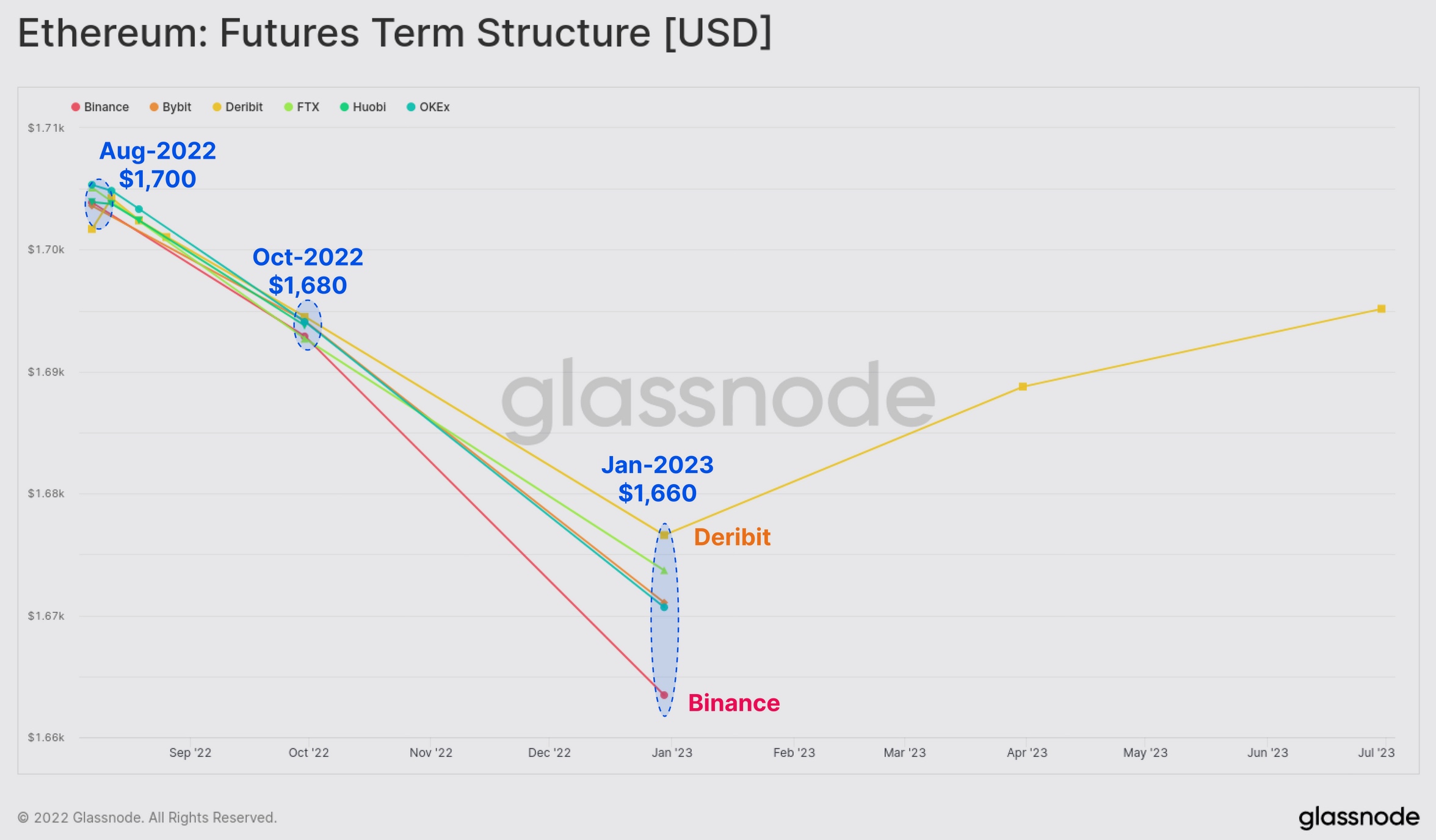
It does not mean that the described analysis also has to play out. The current positioning does not automatically translate into a guaranteed trade idea. Many things can change between now and the Merge. However, it does increase the probability of this particular outcome.
The impact on intrinsic value
There is plenty of misconceptions flying around regarding the upgrade. The two most common ones are that Ethereum will achieve lower gas fees and higher transaction speed, of which neither is correct. The Merge is solely focused on transitioning Ethereum from Proof-of-work (PoW) to Proof-of-stake (PoS), which will not significantly impact throughput or fees. However, the update’s aftereffects will impact the project’s fundamental intrinsic value.
The transition to PoS will no longer require miners; the network will be secured by validators through a staking structure (if you want to know all the details of the transition from PoW to PoS, check out our other article). Therefore, the protocol will no longer have to pay out miner fees, which currently result, on average, in 4.5% ETH inflation. The staking scheme will shrink the inflation rate to around 1%. If we also include the consequences of the EIP-1559 upgrade from the last year, which causes some of the ETH to burn, Ethereum might get to the point when it becomes deflationary. Increased demand coupled with reducing supply gives you the economic price nirvana.
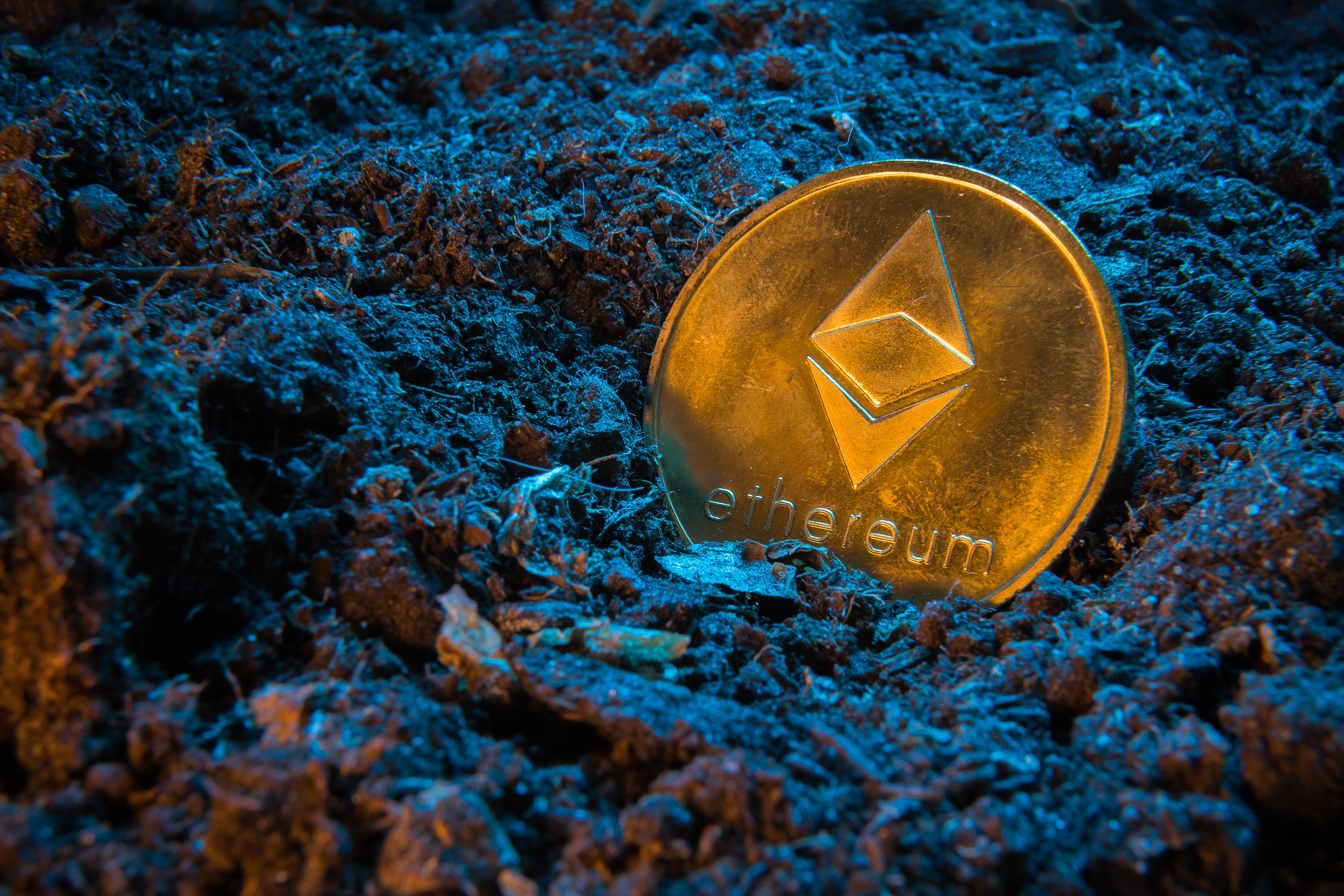
The Ethereum staking yield is also said to become a quasi base interest rate for the digital asset space. Staking yields of the other PoS-based cryptocurrencies would be inferred from Ethereum’s and based on their respective risk attributes. This concept might lure even more institutional money into Ethereum if they start regarding it as the safe asset of the crypto market.
If you are a more risk-loving individual, you can express your conviction about Ethereum by purchasing protocols that extend Ethereum’s capabilities. We have seen these projects rally significantly along ETH. Examples would be Layer-2’s like Polygon (MATIC) or Optimism (OP) or staking solutions like Lido Finance (LDO). These projects have seen a significant inflow of capital and are bound to profit off Ethereum success.

The broader markets and the economy
Ethereum price is not formed in a vacuum and is still strongly correlated with other assets. Just recently, we have seen the BTC price break to the downside and take the whole crypto market with it. ETH price is not yet immune to the Bitcoin slides, and it fell considerably off its highs. Then there is the correlation with the broader stock markets, notably NASDAQ, which includes most long-duration growth stocks that behave similarly to cryptocurrencies. Stock markets had a strong summer, with NASDAQ rallying 18% since the lows. However, as we receive more economic data, the stock market is likely to have, price-wise, a troublesome time ahead, which would almost certainly drag cryptocurrencies down with it. Lastly, there are interest rates. As we mentioned, cryptocurrencies are long-duration assets, which means they are very price sensitive to changes in interest rates. If the inflation data in the coming weeks and months show stubborn stickiness, rates might spike higher, causing a vicious sell-off across risk-on assets like crypto.
This list is certainly not exhaustive; there is a wide spectrum of correlations across markets affecting digital assets. Arguably, these three are the most important to watch. The point is that the overall economy strongly influences cryptocurrency performance. As we all already know, we are far from being out of the woods regarding an economic recession. Considering the data, Asia, especially China, is most likely already in recession, Europe is on the brink of sliding into one, and the US is a couple of months behind. Slowing growth, sticky inflation and drying liquidity are all factors which weigh heavy on cryptocurrency prices. Markets have a tricky time ahead, and it is difficult to tell where the bottom is or whether we have already found it.

Seasonality is another aspect to factor in. Historically, summer has been a moderate period during which not much happens. The rationale is that investors leave the market for a little bit and head on vacations. Even central banks close their doors until September. This summer has certainly stuck to the vacation narrative. Investors have left inflation and the dwindling economy behind and orchestrated a powerful rally.
However, the summer is nearing its end, and we are approaching the historically weaker month – September. Along with falling temperatures, we will receive a bulk of crucial economic data and long-awaited central bank decisions. Since abandoning forward guidance, the Federal Reserve has left people guessing its next move. The September meeting will show us the direction of monetary policy and likely sway the markets one way or another.
The bottom line
These three separate parts just serve to show how many factors we need to consider to form our view. Moreover, the current economic situation makes navigating these markets that much harder.
However, the data we presented clearly show the tactics most institutions and investors prefer to choose when trading around the Merge. It certainly gives the strategy more validity and a higher probability of success. Nonetheless, mind all the other factors mentioned in the article and any other factors you conclude to be essential. There is still a range of variables which can change the narrative during the time before the merge. Therefore, apply whatever strategy you find suitable, but be ready to change your mind if the situation arises.
Regardless of the current state of the economy, the Merge creates a fundamental picture which should be favourable to higher prices down the road. The institutional interest and the overall optimism regarding the update demonstrate that accumulating a decent amount of ETH is likely to be a great investment idea if we take a longer-term view. Once the economy recovers, liquidity starts flowing in again, and the fundamental drivers kick in, then there is nothing holding the Ethereum price back from skyrocketing higher.
Komentáre
Ak si prajete pridať komentár, musíte byť prihlásený.